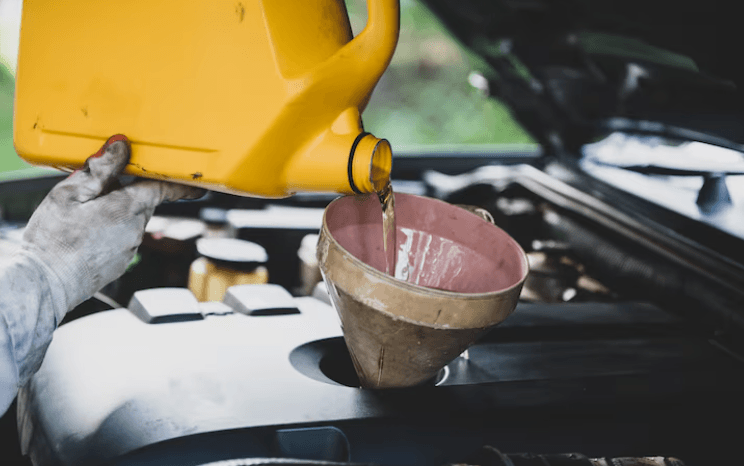
Changing your bike mobil at home can save you both time and money while giving you the satisfaction of maintaining your vehicle on your own. Many bike owners often postpone this essential maintenance task, assuming it’s too complicated or requires professional help. However, with the right guidance, anyone can perform a bike mobil change at home safely and effectively. The process is simple once you understand the key steps and have the necessary tools. Whether you ride daily or occasionally, knowing how to handle this maintenance helps extend your bike’s engine life and ensures a smoother ride.
In this blog, we’ll walk you through the complete process of changing bike mobil at home, step by step. You’ll learn about the tools required, the type of mobil oil to use, and essential precautions to take. We’ll also provide insights on how to dispose of used oil responsibly. By the end, you’ll have the confidence to maintain your bike without relying solely on workshops. If you ever need expert assistance, you can always reach out to Crossroads Helpline for on-demand bike servicing and emergency roadside support.
Before diving into the actual process of changing your bike’s mobil, it’s crucial to understand the fundamental aspects of your motorcycle’s maintenance needs. Knowing the right mobil oil type, the service interval, and the safety precautions ensures you perform the task efficiently. Let’s go through some of the key things every rider should be aware of before starting.
Bike mobil oil comes in various grades, and choosing the correct one is vital for your engine’s health. Manufacturers usually specify the recommended oil grade in your bike’s manual, often mentioned as 10W-30, 15W-40, or similar. These numbers represent the oil’s viscosity, which affects performance at different temperatures. Using the wrong grade can reduce fuel efficiency and damage engine parts.
Additionally, you should know the difference between mineral, semi-synthetic, and fully synthetic mobil oils. Fully synthetic oils offer better protection and last longer but are more expensive. Semi-synthetic oils strike a balance between performance and affordability. Make sure to use high-quality mobil oil compatible with your bike’s engine.
To change bike mobil at home, you’ll need basic tools such as a wrench, oil drain pan, funnel, clean cloths, gloves, and of course, the new mobil oil. It’s also good to have a stand to keep your bike upright and stable while you work. Keeping all your tools ready before starting helps you complete the process smoothly.
Always check that the oil drain plug and washer are in good condition. If damaged, replace them to avoid leaks. Having a pair of rubber gloves will keep your hands clean and safe from hot oil. Preparation is key to making the mobil change efficient and mess-free.
Pick a clean, flat, and well-ventilated area to work on your bike. Performing the mobil oil change outdoors or in a garage with enough light will make it easier to spot spills and handle tools. Avoid doing it in dusty or uneven spaces, as debris can get into the engine or oil container.
It’s also essential to make sure your bike is placed on its main stand for stability. This ensures that oil drains completely and the measurement of new mobil is accurate. A safe workspace keeps both you and your bike protected throughout the process.
Your bike’s manual will typically recommend changing mobil oil every 2000–3000 kilometers or every 3–6 months, depending on usage. However, frequent riders or those commuting in traffic-heavy conditions may need to replace it sooner. Dirty or dark oil is a clear indicator that it’s time for a change.
If you notice your engine running noisier than usual or gear shifts feeling rough, these could also be signs of old or degraded mobil oil. Staying consistent with oil changes will improve your bike’s performance and reduce wear on engine components.
After draining the old mobil oil, it’s important not to pour it down the drain or on the ground. Used oil contains contaminants harmful to the environment. Instead, collect it in a sealed container and take it to a nearby recycling center or service station for safe disposal.
Many local workshops or municipal waste centers accept used motor oil for recycling. Proper disposal not only protects the environment but also helps maintain your responsibility as a rider. Always ensure your workspace remains clean after completing the oil change.
Now that you’re familiar with the basics, let’s walk through the practical steps involved in changing bike mobil at home. Follow these carefully to ensure a smooth, clean, and effective oil change.
While changing your bike mobil at home is convenient, there are times when professional service is essential. Crossroads Helpline offers expert bike maintenance, on-site servicing, and emergency breakdown assistance. Their trained technicians ensure your bike gets the care it deserves without compromising on quality or safety.
Crossroads Helpline provides 24/7 roadside assistance, so even if you face issues mid-journey, help is just a call away. Their convenient, affordable, and trustworthy services make them the go-to choice for thousands of riders across India. Whether it’s regular maintenance or urgent support, they ensure your journey never stops.
Changing bike mobil at home is a valuable skill every rider should learn. It not only saves money but also gives you control over your bike’s maintenance. With the right tools and guidance, the process is straightforward and safe. Always remember to follow the correct steps and safety measures to avoid accidents or damage.
For more complex services or emergency assistance, relying on professionals like Crossroads Helpline is always a smart choice. Their expert services ensure your bike remains in top condition, giving you peace of mind and a smoother ride every time you hit the road.
Author
No tags available